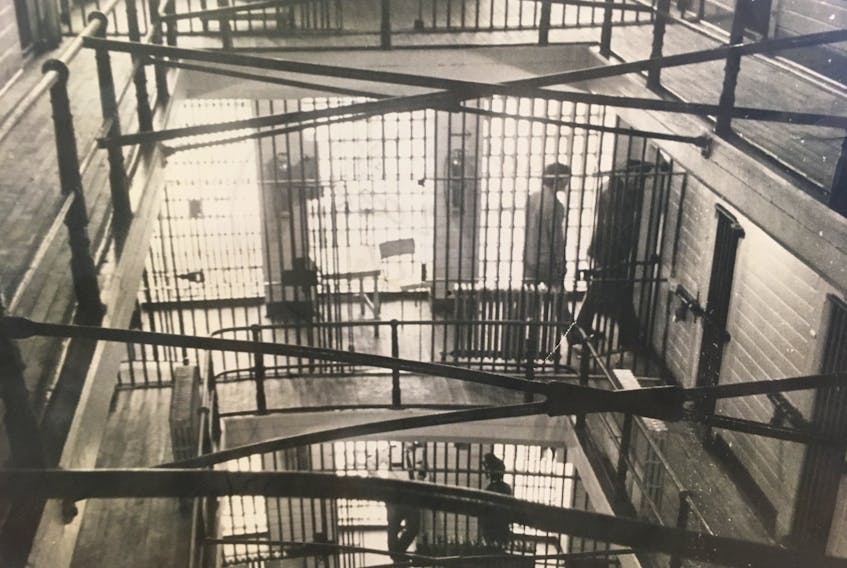“When it comes to human dignity, we cannot make compromises.” — German Chancellor Angela Merkel
Everyone knows that when the government decides how to spend our tax dollars, most people would rather see spending on hospitals, schools and fresh pavement than on a nicer place to keep criminals.

A new prison is an even tougher sell in a province that’s been economically hobbled.
But consider this: when we send people to prison, the aim is to have them eventually walk back out again. And if people are housed in places less dingy and cramped and are offered more supports, they are much more likely to walk out better adjusted than when they went in. That’s in all our interests as they try to reintegrate into the community and find employment, with the stigma of being an ex-con as an extra challenge.
There’s been talk of a new prison to replace the decrepit and incongruously named Her Majesty’s Penitentiary in St. John’s for years. There is consensus it needs to be done. But although various provincial governments have spent money on planning and design, the mouldering outdated compound still hulks on the shores of Quidi Vidi Lake.
Justice Minister Andrew Parsons says he wants to focus on why people commit crimes and are incarcerated.
In a January 2017 letter to The Telegram, he wrote: “Simply saying ‘we need a new correctional facility’ is an oversimplification. In addition to a new modern facility, we need to find a way to address incarceration at its source, to look at why inmates are there in the first place and why they are reoffending. To that end, I believe in restorative justice. … We are currently evaluating measures that genuinely help people, such as adult diversion, bail supervision and a Drug Treatment Court. ... In the meantime, I will address the root cause of these crimes and ways to address the real issues that lead to people being incarcerated.”
That is laudable. But the fact remains that we have nearly 200 inmates warehoused at HMP in conditions unlikely to inspire hope and optimism in the people who work there, let alone those we are trying to rehabilitate.
The World Health Organization states plainly that “prisons are bad for mental health.”
“There are factors in many prisons that have negative effects on mental health,” the WHO states, in what could be a description of HMP: “including overcrowding, various forms of violence, enforced solitude or conversely, lack of privacy, lack of meaningful activity, isolation from social networks, insecurity about future prospects (work, relationships, etc.), and inadequate health services, especially mental health services… The increased risk of suicide in prisons (often related to depression) is, unfortunately, one common manifestation of the cumulative effects of these factors.”
The last soul to take his own life at HMP was Chris Sutton, just two weeks ago.
If children and their caregivers were being kept in conditions like those at HMP, the money for a new facility would soon be found.
In Germany and the Netherlands, new prison models have been launched with great success. They emphasize resocialization and rehabilitation.
Perhaps it’s time we start literally thinking outside the box as well.
In the New York Times in 2015, op-ed contributors Nicholas Turner and Jeremy Travis detailed their fact-finding mission to Germany. The fundamental question they pose is worth considering:
“How do we move from a system whose core value is retribution to one that prioritizes accountability and rehabilitation?”
The German system, they said, “is premised on the protection of human dignity and the idea that the aim of incarceration is to prepare prisoners to lead socially responsible lives, free of crime, upon release.”
If children and their caregivers were being kept in conditions like those at HMP, the money for a new facility would soon be found. A new prison is a can that successive governments have kicked down the road, both in good times and bad.
HMP is grim and shabby, rife with despair and despondency.
Rather than build a new facility to be run on the same old thinking, perhaps we need a whole new prison model, as well.
Pam Frampton is a columnist whose work is published in The Western Star and The Telegram. Email [email protected]. Twitter: pam_frampton
•••
Recent columns by this author
Pam Frampton: Is there a doctor in the house?
Pam Frampton: Muskrat Falls — it’s long term all right
Get the whole story:
Telegram Special Report explores past, present and future of Her Majesty's Penitentiary
TIMELINE: Her Majesty's Penitentiary through the years
EDITORIAL: Another decade of darkness
SPECIAL REPORT: No federal cash for HMP
PAM FRAMPTON: New prison requires new ways of thinking
Her Majesty's Penitentiary — ‘This house of Hell’
Inmate's letter speaks volumes about conditions at HMP in St. John's: friend









